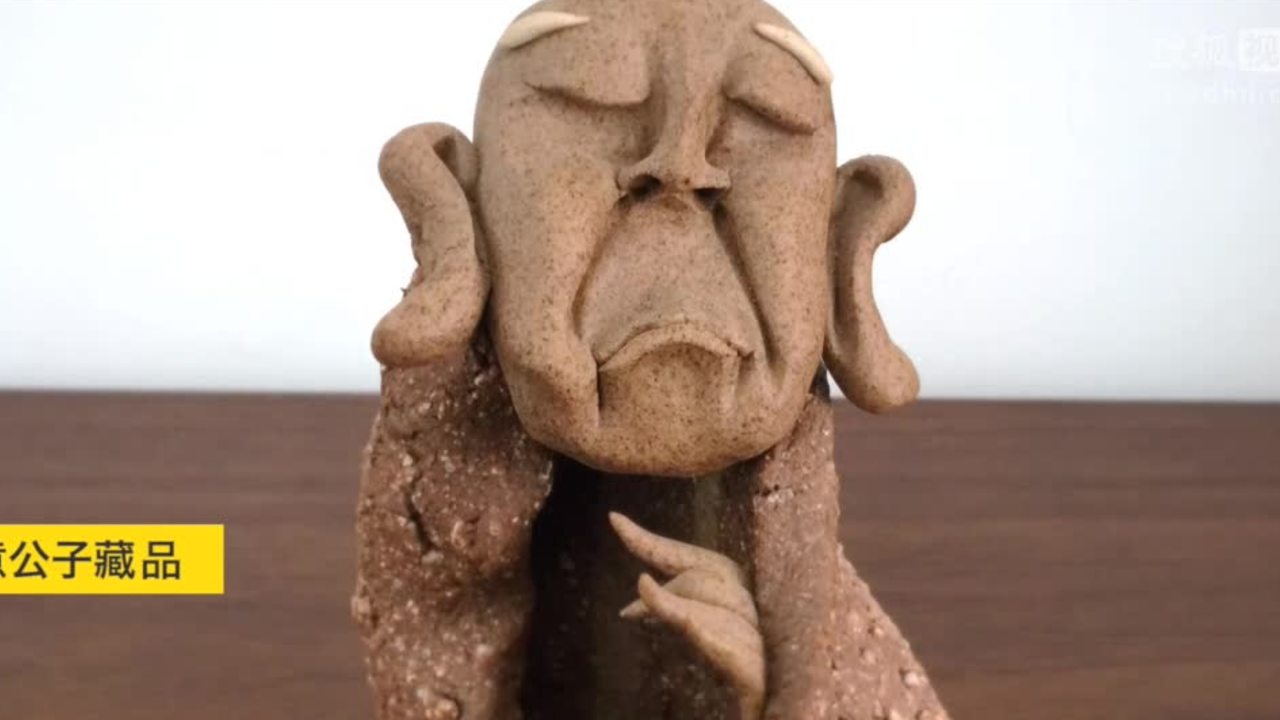
Chinese art, the painting, calligraphy, architecture, pottery, sculpture, bronzes, jade carving, and other decorative art forms produced in China over the centuries.

In this episode of "Art Is So Easy," we meet artist Liu Yong and his eight-foot painting "Lantern Festival at Longshan Temple."

Liu Yong further explains the intricacies of his painting, "Lantern Festival at Longshan Temple."

Siddhārtha Gautama's student, the "Most Venerable Ānanda," came up with the first batch of Buddhist scriptures.

Among the different versions of the "Heart Sutra," by far the most popular one is the version by Xuan Zang.

In contrast to what was portrayed in the "Journey to the West," Master Xuan Zang's journey was, in fact, long and lonely.

The "Heart Sutra" is written in ancient language and contains passages that are difficult for the average reader to understand.

Which emperor could possibly restrain the "Eastern Heretic," Huang Yaoshi and "Western Venom," Ouyang Feng, as well as a host of other strange-looking fellows from the same era?

The complexity underlying the simplicity of Song Huizong's art is especially evident in the Ru porcelain of his time.

We may not be able to live as extravagantly as the emperors before us, but we can still afford to live life with a bit of elegance.

Hong Yi was a master painter, musician, dramatist, calligrapher, seal cutter, poet, and Buddhist monk. His calligraphy version of the "Xin Jing" is greatly beloved by all.

"Farewell" or "Songbie" was composed by Master Hong Yi. This song reflects the vicissitudes of Master Hong Yi's life. More importantly it talks about parting, something Master Hong Yi has experienced numerous times through out his days.

Master Hong Yi grew up in a wealthy and prosperous family. He had everything he could possibly need. Why would he ever want to leave?

In our lives we experience pain and sorrow, Master Hong Yi is no different. One of the most painful experiences he went through was loosing his mother.

When he was in Japan Master Hong Yi came in touch with Western art, which lead him to start his magazine. It was through magazines that he first heard of fasting.

Through fasting Master Hong Yi began to adjust his lifestyle and mindset to fit that of a monk. Afterwards he shaved his head and formally became a monk.

When Master Hong Yi left to become a monk everyone was shocked. Even his wife and kids didn't understand.

The transitions in Master Hong Yi's life happened naturally and are connected to his growth as an individual. Some wonder whether or not in his decision to become a monk he abandoned this world.

After becoming a monk Master Hong Yi deepened his study of Buddhism. The Buddhism value, love is compassion, became a part of his doctrine.

We are constantly saying goodbye to our friends, to our family, to our past selves. Master Hong Yi is no different. These goodbyes became an inspiration for his song, "Farewell".

This episodes is a continuation of our Art series! We will be talking about Chinese sculpture in the next few videos. Sculpture in China has a long history and even predates most Western sculpture.

In the chaos and instability during Wei, Jin, and North-South dynasties people looked for hope and relief everywhere. When you have nothing how can you still have hope?

How and why did does an icon of Buddha stop refugees in their tracks? Is is because of the religious symbolism behind the icon or is there more to this classic, ethereal icon?

Let's compare the Beiqi Buddha to that of the Northern Wei! Who knew Buddha icons could represent the same ideology yet be so different visually. Take a look for yourself.

The expression that Buddha bears is one of deep peace, but where does this expression come from? What exactly is this so called, "deep peace" and how can we achieve this state of being?

Submission and acceptance of the world is something to respect. There is a phrase in Lao Tzu's "Dao De Jing", "the sage is ruthless, to them ten thousand things are but straw dogs". This phrase doesn't necessarily denounce sages or monks but rather reveres them for their ability to accept things as they are, which in it own right is a remarkable ability.

Living in the political instability of the Wei, Jin, North-South dynasties was in itself an experience of great suffering. How did people like Xiaoming survive? The Buddhist ideas of submission and acceptance may have played a part.

The artist tells about the intricacies of his very dull painting process. Some people say they want to come watch him painting, but he advises against it. The magic is in the tedium.

The artist describes how he first began painting oil paintings. He copied the paintings on on poker chips confiscated during the cultural revolution.

The painter describes how he would travel all over his city in his teenage years to observe all the different oil painters he could see.

The artist talks about how in his day conversation was more lively and people weren't looking at their phones all the time.

In this episode, Yi Gongzi introduces the often overlooked museum specialty: ancient Chinese bronze ware.

 Adv-Intermediate
Adv-Intermediate
China's first statues did not come from the popular Song or Tang dynasties. Yi Gongzi explains.

 Adv-Intermediate
Adv-Intermediate
Yi Gongzi describes the chaos and turmoil of the Wei, Jin, Southern and Northern Dynasties.

 Adv-Intermediate
Adv-Intermediate
Yi Gongzi tells the tale of Xiaoming and how he discovered an important find during the Northern Qi Dynasty.

 Adv-Intermediate
Adv-Intermediate
Why does the statue of Buddha suddenly bring calmness to those who have experienced suffering?

 Adv-Intermediate
Adv-Intermediate
How do the Buddha statues from the Northern Qi Dynasty compare with those from the Northern Wei Dynasty?
Are you sure you want to delete this comment? You will not be able to recover it.